
[ad_1]
We’ve refinished hardwood floors in 5 of the 6 homes we’ve owned. That doesn’t make us professional floor refinishers, but as homeowners and DIYers, we’ve developed expertise for what to expect, what pitfalls to look out for, and how much refinishing your hardwood floors might cost. So in this post, we’ll answer all of your hardwood floor refinishing FAQs along with some before and after photos of our various projects!
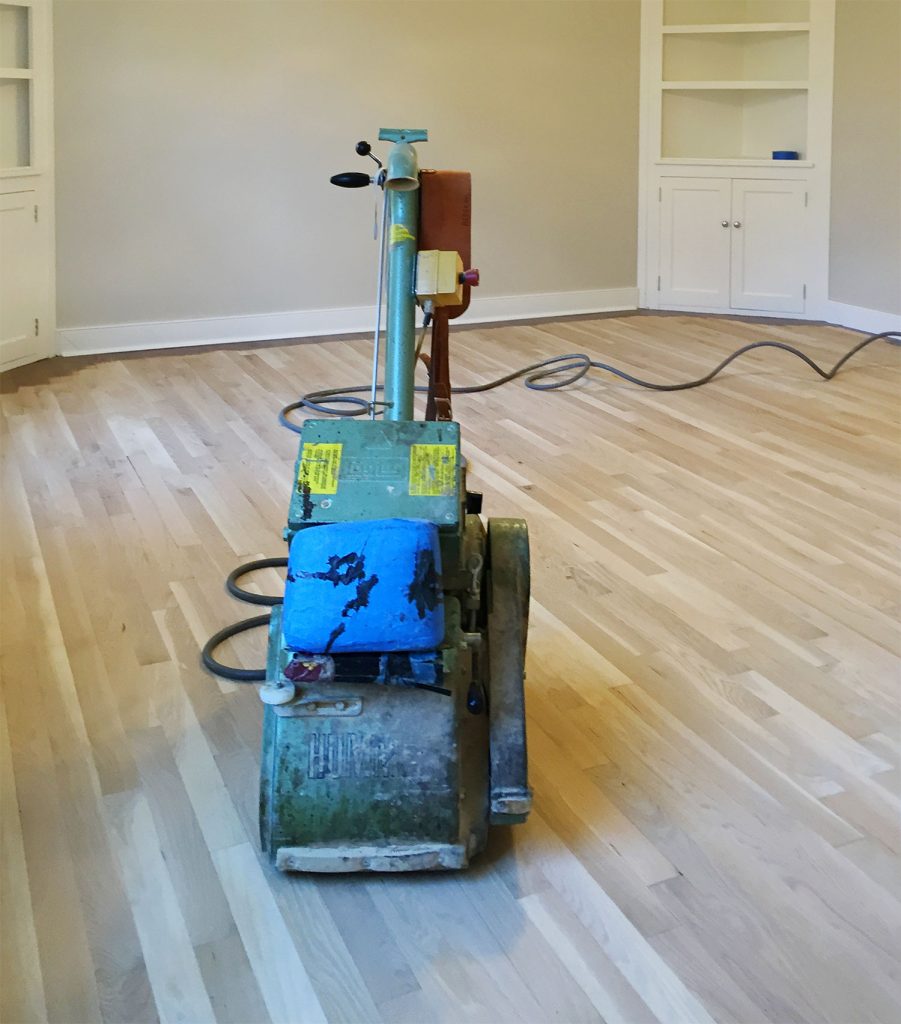
Refinishing hardwood floors can be a daunting and disruptive project, but it’s always been well worth the effort for us. You can eliminate scratches and discoloration, restore richness and shine, or even change the color entirely! We’re continuously surprised by how much of a difference a refinished floor makes to the whole space. Seriously, they can practically make your house look brand new! So let this post be a supportive-yet-realistic nudge towards taking the plunge.
Hardwood Floor Refinishing FAQS
Here are some of the specific questions we’ll answer in this post:
- Can I refinish my hardwood floor myself?
- How much does refinishing hardwood floors cost?
- Is refinishing your hardwood floors worth it?
- What is the process like?
- Do I have to move all of my furniture out?
- Can I stay in my home while getting my floor refinished?
- How long does refinishing hardwood floors take?
- What questions should I ask my floor refinisher?
Please note that the information in this post is based on our personal experience across 6 houses in 3 different cities, each of which presented slightly different scenarios.
Can I Refinish My Hardwood Floor Myself?
Refinishing hardwood floors is a project you can do yourself, however, we have done many many things ourselves (like building a deck, making a pavered patio, etc) and we like to leave our floor refinishing to the professionals. The actual refinishing process is not complicated – it’s basically sanding and staining! – but professionals bring special equipment, skills, and expertise that most DIYers won’t have – especially right off the bat. It’s also a task that can be tedious, tiring, and time-consuming, so a skilled refinisher can complete the project faster and more efficiently.

If the cost of using a pro prevents you from hiring out the job, here are some general steps to refinishing hardwood floors as a DIY project:
- Move all furnishings, decor, artwork, window treatments, etc
- Remove all quarter-round and/or baseboard molding using a pry bar
- Seal off doorways and air vents with plastic sheeting and painter’s tape
- Patch and repair any damaged spots with wood filler and/or new boards
- Sand the floor, usually 3-4 times, using higher grit sandpaper with each pass. Use a belt sander or drum sander for the larger areas and a hand or edge sander to do the perimeter. Be sure to always sand in the direction of the wood grain.
- Do a final buff with a floor buffer or hand sander with high-grit sandpaper
- Vacuum up all dust
- Apply stain (optional) to achieve your desired color, following the manufacturer’s instructions. Allow 24 hours to dry between coats.
- Apply sealer to protect floors, following instructions. Allow 24 hours before walking and 72 hours before moving furniture or rugs back in.
- Reinstall molding. Caulk and paint as needed.
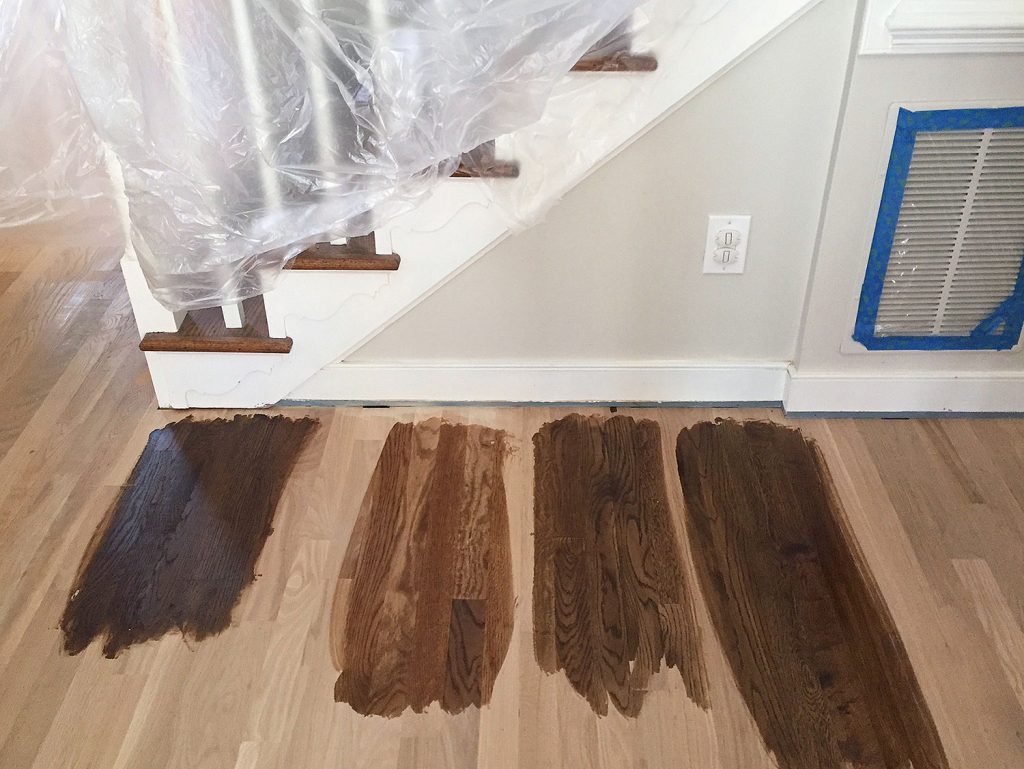
As you can see, this project involves a lot of detailed and repetitive work. Plus, tasks like operating floor sanders can be physically exhausting, especially if you are refinishing a large home. And if your project involves any special or difficult circumstances, an expert may be better equipped to handle them.
For example, we hired pros to refinish the entire first floor of our third home a few years ago. This involved tearing out the flooring for two rooms that didn’t already have hardwood floors and “feathering in” new boards to create a seamless look. The professional refinishers executed these tasks much faster and with greater success than we could’ve on our own.

This project also involved removing slate tile in one room and laminate in another. It took three men a whole day to demo and prep these spaces using special demolition tools. I can only imagine how much time it would’ve taken us!
How much does refinishing hardwood floors cost?
Experts say floor refinishing typically costs between $3-$8 per square foot. That means a 200-square-foot room could cost anywhere from $600 to $1,600. These costs will vary depending on your area, the size of your space, and if there are any special circumstances to your project. For instance, some of our projects have involved extra demolition or patching of unsalvagable portions (like below).

Personally, we have paid anywhere from $900 to nearly $10,000 for our floor refinishing jobs. The cheapest was an outlier (about $1.50/square foot) because we agreed to do some of the prep and molding repair ourselves. Of course for the pricier jobs it was a lot more flooring (like an entire house – we redid the floors of the duplex and the pink house entirely). On average we have paid about $5/square foot.
Is Refinishing Hardwood Floor Worth It?
Yes and yes! Refinishing hardwood floors is a rewarding home improvement for both personal and financial reasons. In fact, according to a 2022 National Association of Realtors report, “Hardwood Floor Refinish” is the #1 interior remodeling project for resale cost recovery – even more than installing new wood flooring! The NAR estimates homeowners will earn back nearly 150% of the refinishing cost in increased home value.
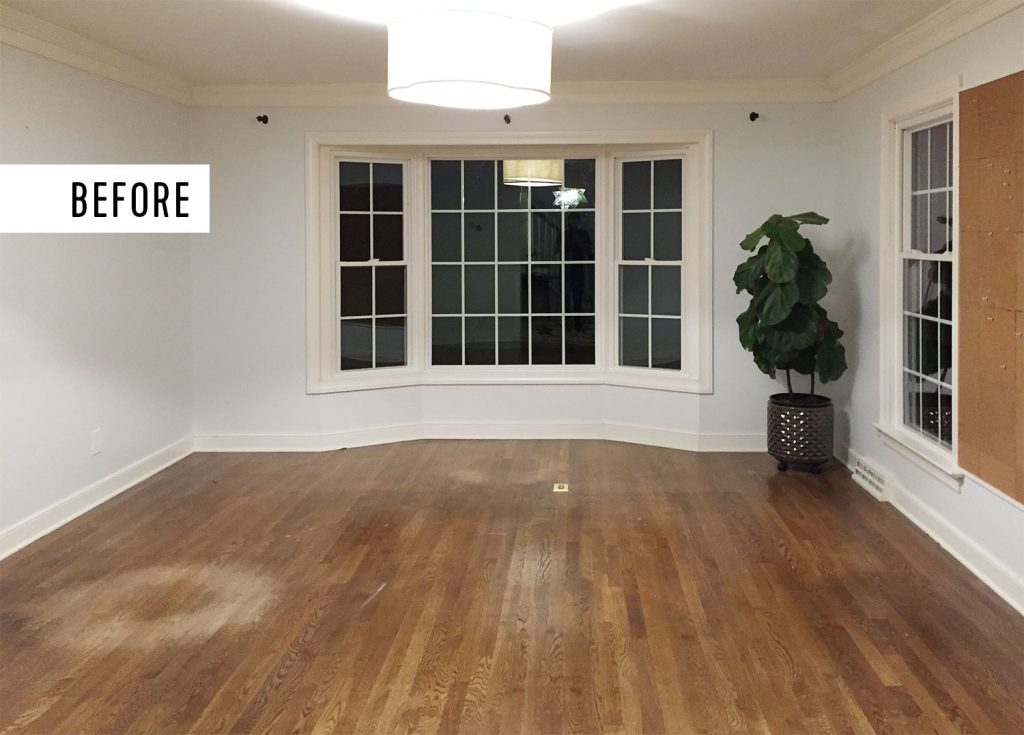
Resale value aside, refinished floors are a high-impact way to update your home for your own enjoyment. In the same report, the NAR awards floor refinishing a perfect 10 on their “Joy Score” for homeowner satisfaction. It’s hard to articulate how shockingly good the transformation can be – and this is coming from people who have done it 5 times! People just don’t realize how much worn, faded, or outdated flooring can drag down the overall appearance of their home.
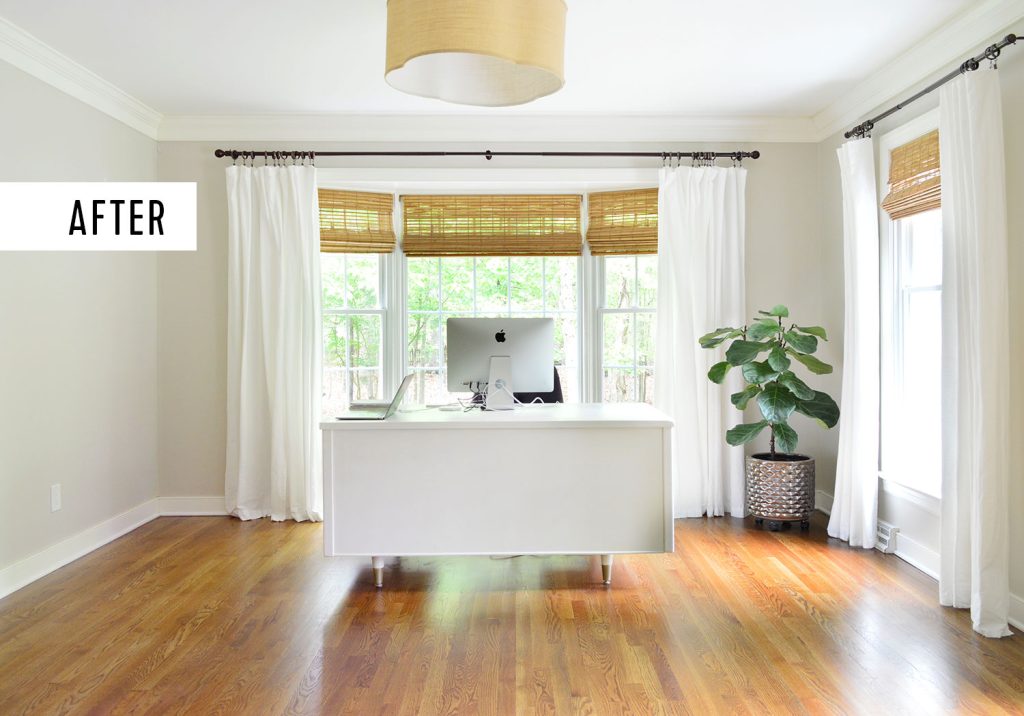
We know firsthand that the expense and inconvenience of refinishing your floors isn’t minor. But every time we’ve done it, we’ve wished we had done it sooner. Refinishing hardwoods can truly transform a whole room or house.
What is the process like?
So you’ve decided to have your wood floors professionally refinished? Great! Here’s what to expect as a homeowner during this project. Scroll up to the first question for our overview of the DIY steps to refinish your hardwood floors yourself (and why we don’t recommend it in most cases).

Finding a floor refinishing professional
We suggest asking friends, neighbors, or other home improvement contractors you’ve worked with for recommended floor refinishers. We have found all of our favorite floor refinishers this way. Message boards like Nextdoor or Angie’s List can also point you to reputable tradesmen.
Getting an estimate
Your contractor (or potential contractors) should visit to measure the space and discuss any questions with you first. This is an opportunity for you to get a feel for them and better understand their process. We have suggested questions for them further down in this post. We often will get 2 or 3 different estimates to pick the best (not necessarily cheapest!) person for our job.
Acclimating the wood

Several of our refinishing projects involved adding or replacing sections of our wood floors, which meant adding new boards (or reclaimed boards, shown above). New hardwood flooring should acclimate to the moisture levels in your home before installation to prevent swelling or contracting afterward. This means new flooring should be delivered and stored indoors at least 3 days before installation. Some installers recommend up to 2 weeks of acclimation. (Don’t leave the doors and windows open during this time).
Emptying your space

Remove all furnishing, rugs, appliances, and/or other items obstructing clear and open access to your floors. This could also involve uninstalling cabinetry or plumbing fixtures as well. You will also want to remove (or cover) artwork, window coverings, or other items you don’t want to get dusty. If you are only refinishing one room, you can usually move these items into a nearby room. If you are refinishing a whole house, you may need to move out almost entirely. We used a POD in our driveway when we refinished our first level. A storage unit also works. Some people may even hire a moving company.
Picking a stain color
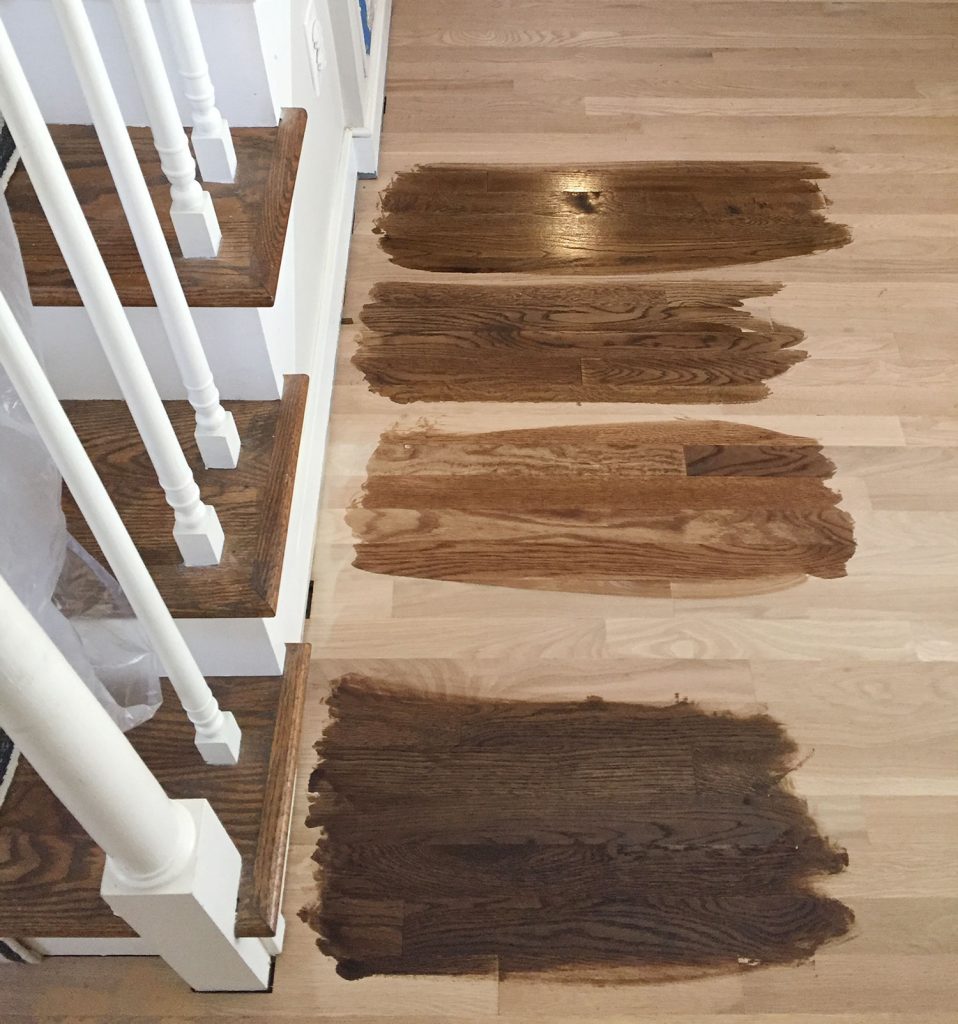
At some point during the process, you should work with your refinisher to select a stain color. You may be satisfied picking from a swatch book or trusting your professional to match a certain look. But we recommend having the floor refinisher stain small sample sections directly onto the floor (which can be sanded off afterward). This allows you to see large swatches in your space, helping you feel confident about your decision.
Waiting and more waiting

Floor refinishing is a multi-day process, no matter the size of your project. Stains and sealers need lots of drying time (usually at least 24 hours each) and it’s recommended that you wait several more days for them to cure (aka: harden) before moving heavy furniture back in. When our first floor was refinished, we slept out of the house for 6 nights and didn’t fully move our furniture back in for another 10 days.
Cleaning & touch-ups
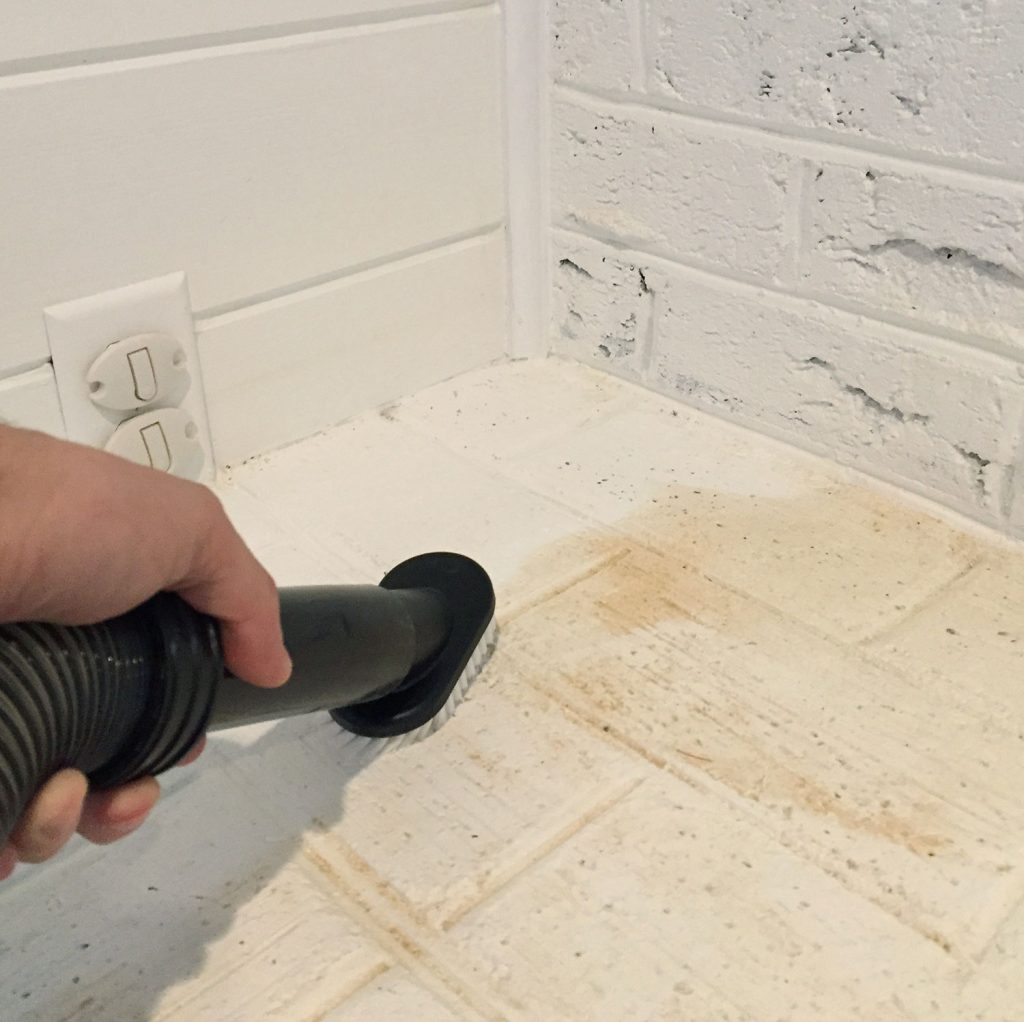
While our contractors have always done a good job of collecting as much dust through the process, we inevitably had dust left on some surfaces that we needed to clean ourselves. Additionally, you or your contractor may have to reinstall, caulk, and paint any baseboard or quarter round that was removed. We offered to do this ourselves in a couple of instances to save money. Same goes for appliances, cabinets, or plumbing fixtures that may have been removed.
Do I have to move all of my furniture out?
Yes, you will need to remove all obstructions from any rooms where you are refinishing the floors. This includes furniture, rugs, appliances, plumbing fixtures (toilets, sinks, etc), and maybe even cabinetry. We also recommend removing artwork, window coverings, and other decor you won’t want to worry about dusting later.
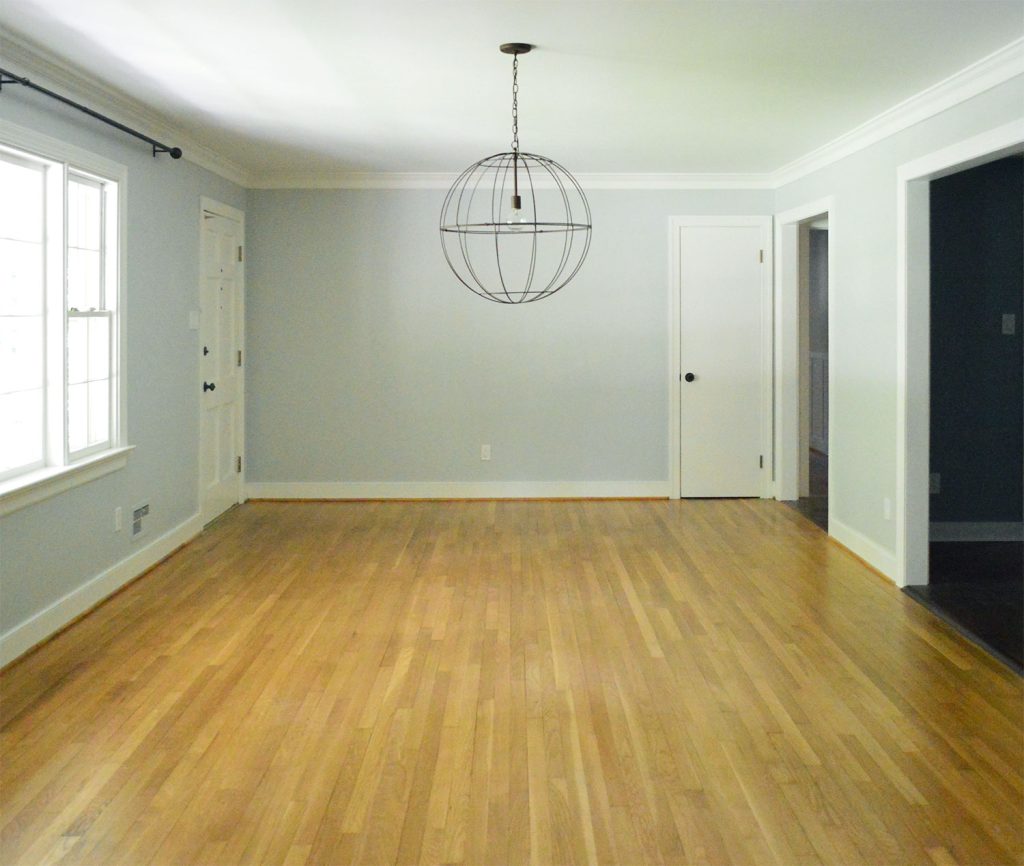
This is why it is best – if possible – to refinish your floors before moving into a home or as part of another renovation (like a kitchen remodel) where your home is already disrupted. If that’s not possible, treat it like you are moving out temporarily. If you can’t move your furniture into unaffected rooms or levels of your home, you may need to rent a storage unit or POD to hold your furniture.
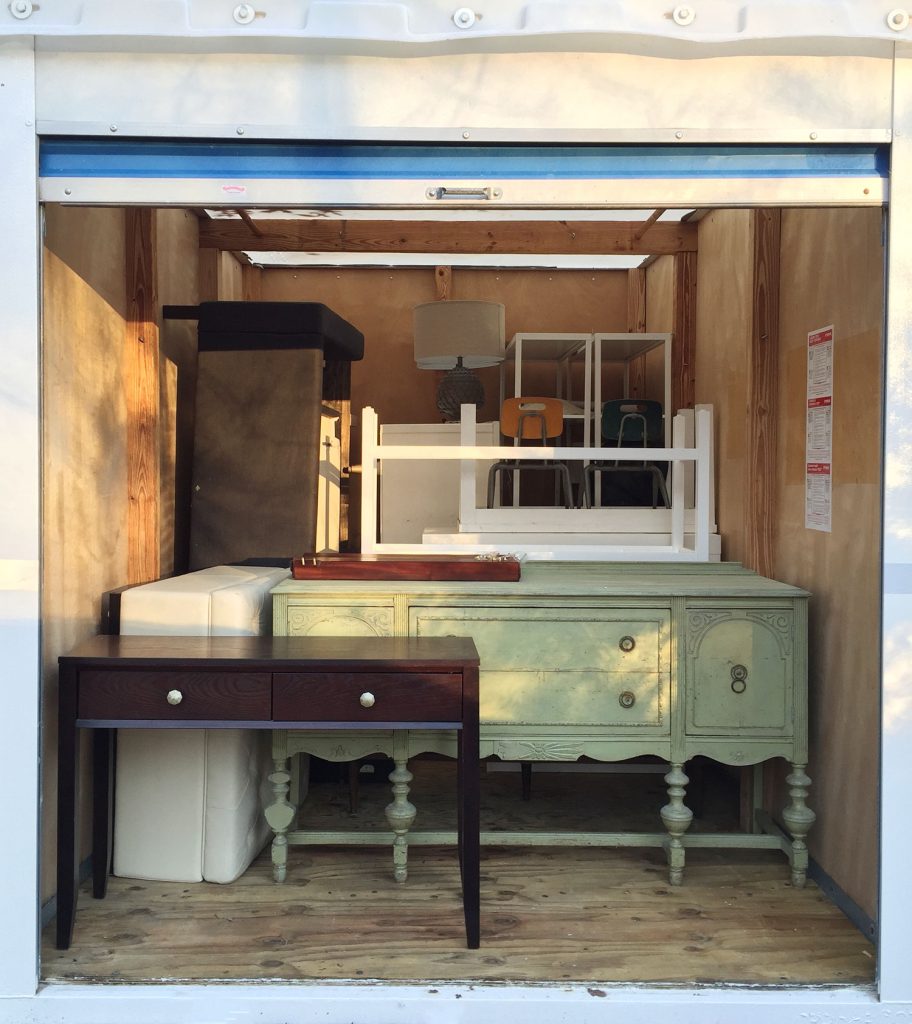
Moving out of your space is not a small task, we know. It’s the main reason we put off refinishing floors in some of our houses. And unfortunately, unlike projects like painting, you can’t simply scoot things into the middle of the room and throw a tarp over them. There isn’t a shortcut here. To get the highest quality, most efficient result, it’s best to give your contract clear, unobstructed access to every area that needs refinishing.
How long does refinishing hardwood floors take?
Having your floors refinished typically takes 3 to 14 days or more, depending on the scope of your project. Here are some GENERAL time allotments you may need to account for.
- Prep (demo old flooring, remove quarter round, uninstall plumbing, etc): 0-2 days
- Repair, patching, or laying new sections of hardwood: 0-2 days
- Sanding: 1 – 2 days (about 1,000 square feet per day)
- Staining: 1 – 2 days (about 1,000 square feet per day)
- Sealing: 3 – 6 days (about 1,000 square feet per day, 1 coat per day)
- Curing: 1 day
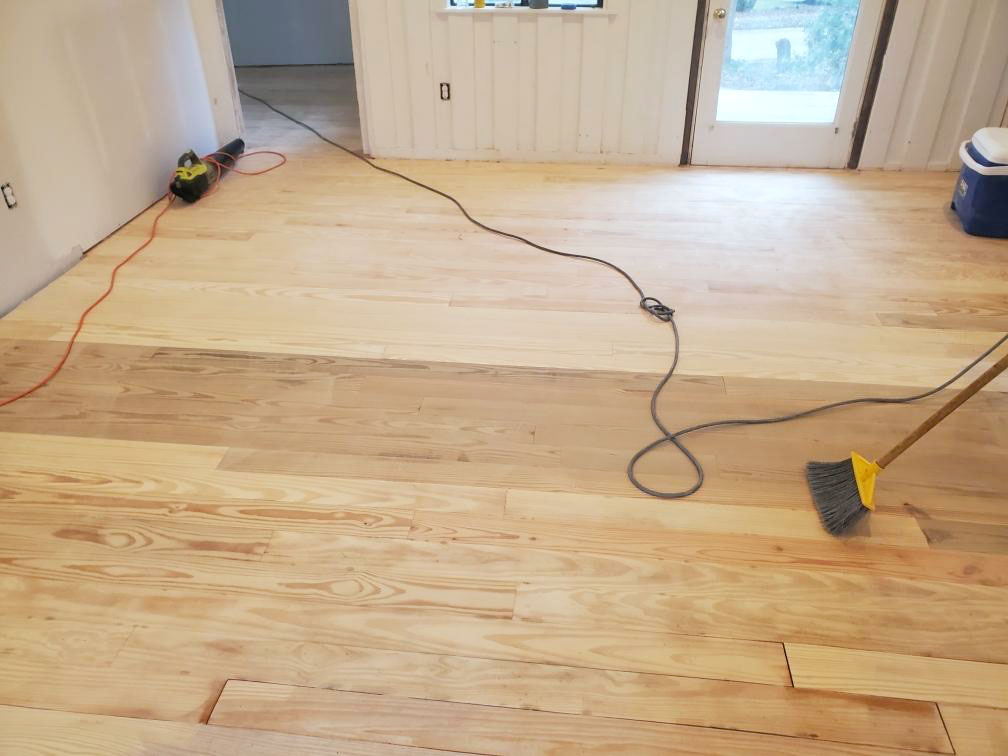
Our shortest project only took 4 days for 600 square feet. Our refinisher was able to sand and stain on the first day, then spent the next 3 days applying one coat of oil-based polyurethane each day. We still waited another 3 days to move back in, allowing the finish to cure and the fumes to fully dissipate.
One way to speed up a refinishing project is to skip stain and just clear coat the natural color of the floor. You can also shorten the sealing process by choosing water-based finishes, which dries faster than oil-based finishes. That may allow your refinisher to apply multiple coasts in one day, versus oil-based polyurethane that typically requires 24 hours between coats.

It’s best to discuss the timeline with your contractor upfront and ask about the pros and cons of various options. The fastest result may not be best long-term outcome for you.
What questions should I ask my floor refinisher?
We’ve worked with 4 different floor refinishers across 5 different homes. Here are some things we recommend discussing with them up front to make sure you are on the same page before the project starts.
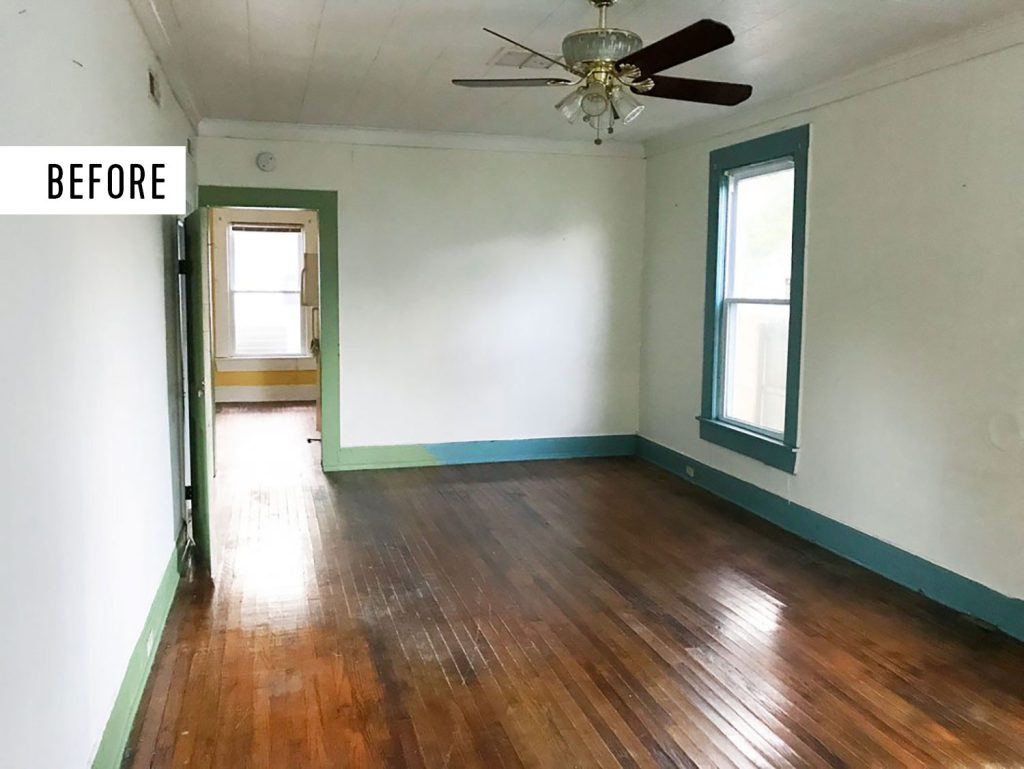
- Are my floors good candidates for refinishing?
- Do any areas need to be repaired or replaced with new wood?
- How long does any new wood need to acclimate before you begin?
- What needs to be removed from each room? Who is doing that, me or you?
- What needs to be covered, protected, or sealed off with plastic? Who is doing that, me or you?
- What other preparation do you suggest / expect me to take before you arrive?
- Are you removing & reinstalling any baseboard molding? If not, should I?
- Are there any tasks I could do to reduce the project cost?
- Are there any tasks I could pay you to do to increase the project speed?
- How long do you expect the project to take?
- Are there any options that could speed up the project?
- How much time will I need to be out of the house?
- How do I partake in the stain color selection? Can I see test spots in my home?
- What other decisions will you need me on site for during the project?
- What type of sealer do you recommend? What are the pros and cons of my options?
- How long until I’m able to walk on my new floors?
- How long until my pet can walk on them?
- How long until I can put furniture, rugs, or other heavy objects on them?
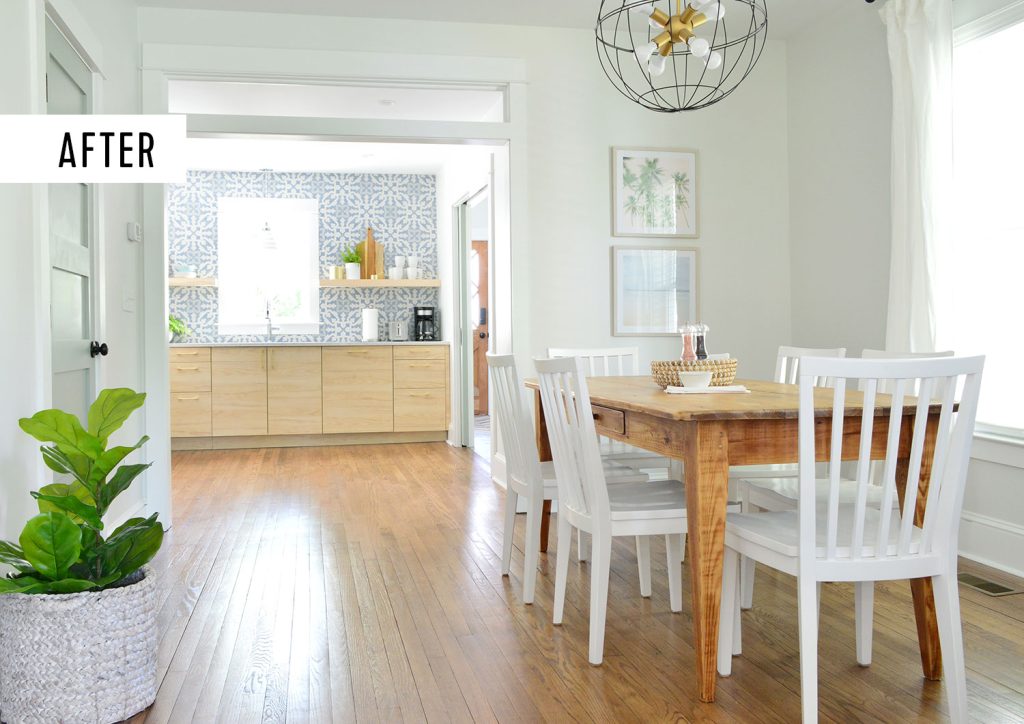
You can certainly Google some of the answers to these questions (some are in this post!) but we always recommend conferring with your on-site professional as well. This helps them know you are a thoughtful client and you will hopefully get reassurances that they are a knowledgeable refinisher. It also helps avoid confusion around timelines, budgets, and scope of work.
Our Hardwood Floor Refinishing Projects
If you would like to read more about our specific hardwood floor refinishing projects, please see the posts below. They range from matching original hardwoods to new prefinished flooring (below) to restoring 100-year-old pine floors!
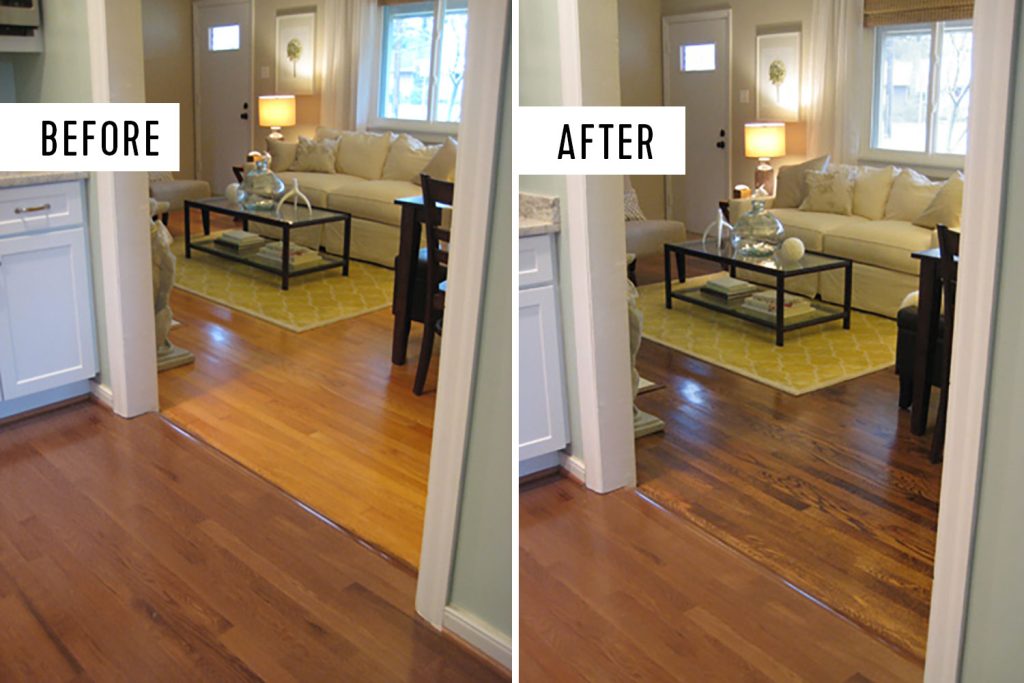
More Flooring Projects
If you would like to read about other flooring projects we’ve done, please check out the posts below:
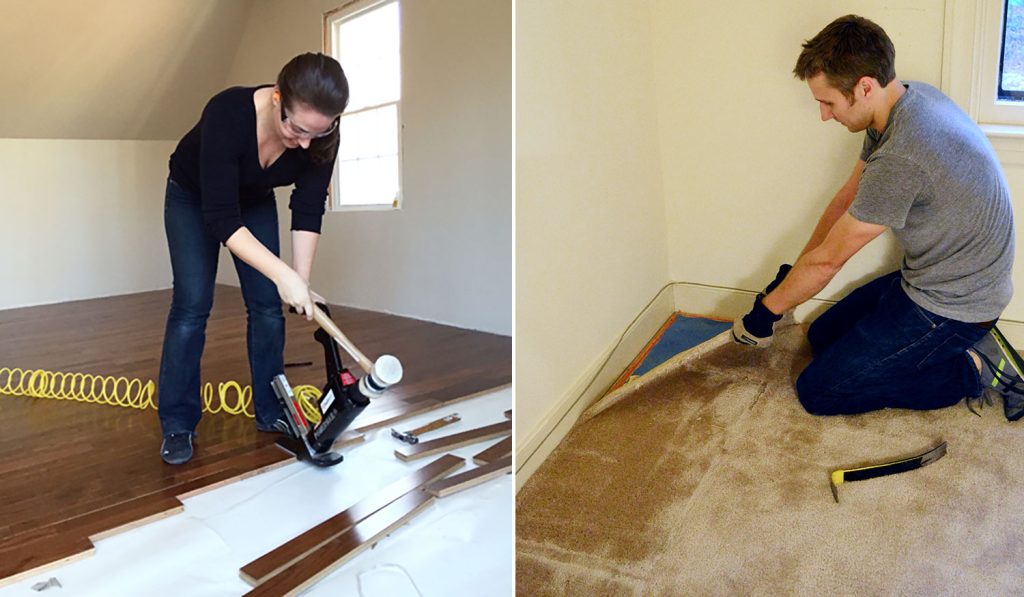
NOTE: This guide was originally published in 2009 after our first refinishing experience. We updated it with additional information and photos to include a wider range of projects in 2024.
More posts from Young House Love
[ad_2]
Source link






